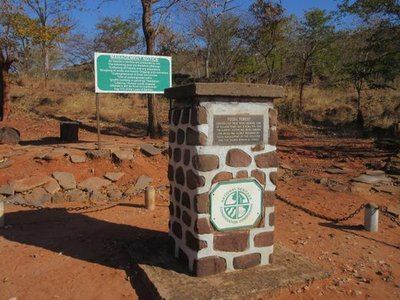Chirundu Fossil Forest


About 150 million years ago,
in what is now the Luangwa Valley, a totally different ecosystem flourished than the one found there today. At that time, large coniferous trees thrived, such as
Dadyoxlon sp.
and
Rhexoxylon africanum
. When these trees died, they were eventually buried and turned to stone.
The site today contains a large number of extremely well-preserved ancient trees, with features such as tree rings and bark still visible on the fossils. Many of the trees are lying in what appears to be the same location and position as when they fell during the Jurassic Period. The fossils are in a large array of sizes, from small fragments to complete logs up to 30 feet long.
Scientists posit that 150 million years ago, what is today a desert region enjoyed a more temperate and wet climate, favorable to growing tall coniferous trees, but also prone to storms and floods. A giant flood may have felled the large trees in this ancient forest, which were then preserved in a layer of soil and petrified as the organic materials were replaced by minerals. In modern times, the unique Chirundu Fossilized Forest is a National Monument of
Zambia
.